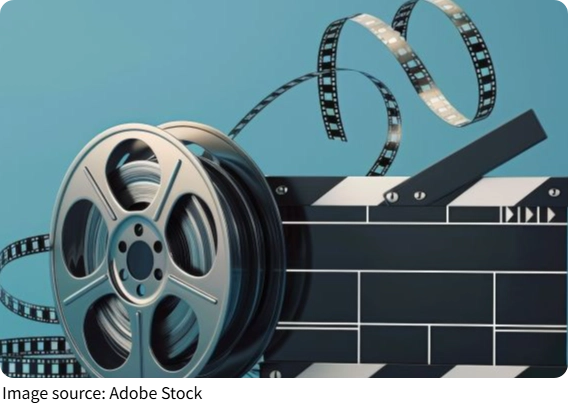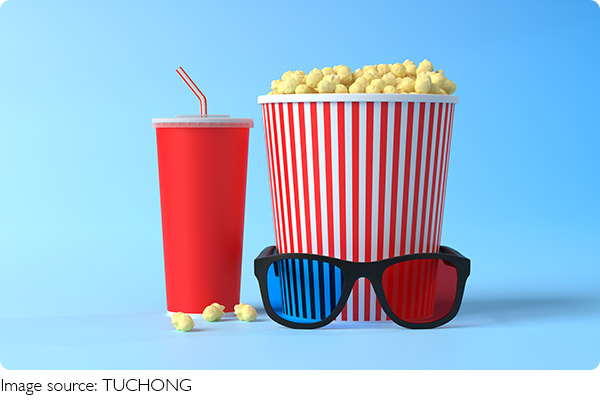Birth of Cinema

Long before the invention of the modern movie camera, humans were captivated by the idea of capturing and displaying motion. In ancient times, shadow puppetry and rotating drawings offered simple illusions of movement.
This fascination gradually led to a series of inventive breakthroughs, each bringing us closer to the cinematic experiences we enjoy today. But how exactly did we get from static images to full-motion films?
The journey is filled with creativity, persistence, and technological curiosity.
The Magic Lantern: A Glimpse of Light
One of the earliest devices to bring projected images to life was the magic lantern. Invented in the 17th century, likely by Dutch scientist Christiaan Huygens, this optical device used a light source to project painted images on glass slides through a lens onto a wall or screen.
These early lanterns weren't just toys—they were used for education, entertainment, and storytelling. With improved lenses and brighter illumination, magic lantern shows became incredibly popular in Europe during the 18th and 19th centuries. Though the images were static, clever showmen could change slides quickly or overlay motion effects, giving a primitive sense of animation.
The Phenakistoscope and Zoetrope
As the 19th century unfolded, inventors began searching for ways to produce true motion using sequential images. Devices like the phenakistoscope (1832) and the zoetrope (1834) were key milestones. Both used a series of drawings showing progressive stages of motion. When spun and viewed through slits, the images appeared to come alive.
These devices demonstrated a basic principle that would underpin cinema: persistence of vision. This optical phenomenon allows our eyes to blend rapid sequences of still images into a continuous visual experience.
Photography Changes Everything
The invention of photography in the early 1800s added a critical piece to the puzzle. Instead of hand-drawn images, inventors could now use real-life captured scenes. Pioneers like Joseph Nicéphore Niépce and Louis Daguerre revolutionized image recording.
In 1878, English photographer Eadweard Muybridge took it a step further. Using a line of cameras triggered by a galloping horse, he created a sequence of photographs that proved animals lifted all four hooves off the ground while running. These sequential photos, when viewed in order, created the illusion of movement—and planted the seed for motion pictures.
Celluloid Film: A Game Changer
While photography advanced rapidly, early images were printed on heavy glass plates—not ideal for motion. The breakthrough came with celluloid film, developed in the late 19th century. Inventors like George Eastman and Hannibal Goodwin created a flexible, transparent base that could hold photographic emulsions.
Suddenly, images could be recorded in long strips and moved through a camera and projector. This material became the foundation for early movie-making.
The Birth of the Movie Camera
By the 1890s, inventors were racing to develop devices that could capture and project moving images on film. One major innovator was Thomas Edison, whose team created the Kinetograph (a camera) and the Kinetoscope (a peephole viewer) to film and display short movies.
However, these devices only allowed one person to watch at a time. Around the same time, French inventors Auguste and Louis Lumière developed the Cinématographe—a portable machine that could both record and project moving images to a large audience. Their public screening in Paris in 1895 is widely considered the birth of commercial cinema.
From Short Clips to Storytelling
Early films were simple—short clips showing workers leaving a factory, a train arriving at a station, or children playing in a garden. But it didn't take long for filmmakers to explore storytelling. Georges Méliès, a magician turned filmmaker, used film to create fantasy and illusion.
His 1902 film A Trip to the Moon combined narrative, special effects, and creative staging to push cinema into a new realm. Others followed suit, transforming motion pictures from technical novelties into powerful tools for narrative art.
Projection and Public Experience
Another key innovation was the development of projection systems. The ability to project film onto large screens for audiences changed everything. Movie theaters began to appear, turning cinema into a social event. The combination of storytelling, motion, and projection captivated people from all walks of life. By the early 20th century, motion pictures had become a new form of mass entertainment.
Refining the Technology
As the demand for films grew, so did the need for better cameras, projectors, and film stock. Engineers refined the mechanics to allow smoother film motion, consistent frame rates, and clearer images. The standardization of 35mm film and the introduction of perforated film strips helped synchronize image movement and ensure compatibility across different devices.
All these refinements contributed to the seamless movie experience we now take for granted.
The Legacy of Early Inventions
Today's digital cinema owes a great deal to those early pioneers. From magic lanterns and zoetropes to film reels and projectors, each invention built upon the last. The transition from still images to moving stories reflects not just technical progress, but a deep human desire to share experiences, emotions, and imagination in a visual form. Without these foundational steps, modern filmmaking, streaming platforms, and visual effects wouldn't exist.

Why This History Still Matters
Understanding early cinema technology helps us appreciate the magic behind every movie we watch. It wasn't just about machines; it was about visionaries who imagined possibilities where others saw limitations. Their creativity shaped one of the most powerful storytelling tools in human history. As visual media continues to evolve, knowing where it all started reminds us that innovation begins with curiosity.
What's Your Favorite Milestone?
Was it the spinning zoetrope that caught your attention? Or the first public movie screening by the Lumière brothers? Everyone has a part of film history that inspires them. Share your favorite early cinema invention—or let us know if you've ever tried one of these devices yourself!
-
 Helicobacter Pylori Alerts!Bloating? Ulcers? Pain?! New H. pylori Protocols Could Finally Wipe Out This Silent Stomach Invader!
Helicobacter Pylori Alerts!Bloating? Ulcers? Pain?! New H. pylori Protocols Could Finally Wipe Out This Silent Stomach Invader! -
 Balance Blood Sugar: How?Crashing? Craving? Dizzy?! Learn The Hidden Tricks To Keep Your Blood Sugar Steady All Day Long!
Balance Blood Sugar: How?Crashing? Craving? Dizzy?! Learn The Hidden Tricks To Keep Your Blood Sugar Steady All Day Long! -
 Gold Traps You Must DodgeAvoid These Gold Traps – Investors Are Losing Millions!
Gold Traps You Must DodgeAvoid These Gold Traps – Investors Are Losing Millions!